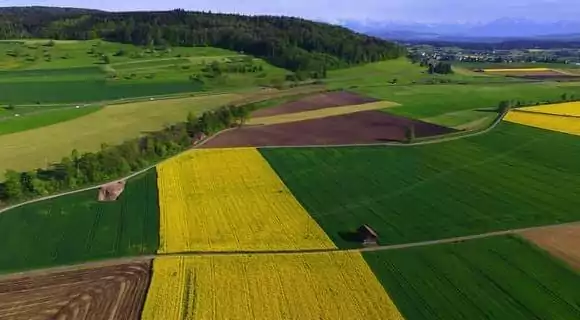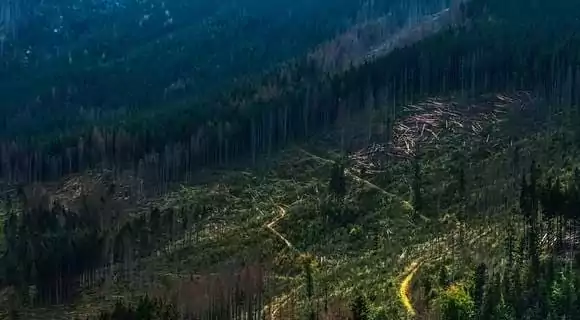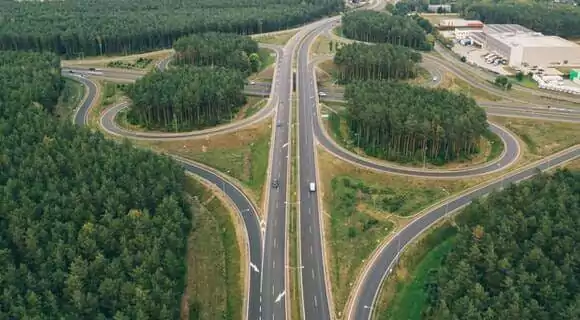
World Space Week: Satellites Improve Life
In December 1999, the General Assembly of the United Nations declared international space week to acknowledge space research, technological progress, and foster common efforts for further space expansion. Since then World Space Week has become the biggest space-related event and is held annually. The major aim of it is to popularize space by engaging students and raise public awareness around the progress industry makes.
Each year the World Space Week Association selects a theme for the event and creates a program for participants to follow. In 2020, the celebration is devoted to satellites and benefits satellite technology brings to humanity. With the motto “Satellites improve life”, the World Space Week will explain how exactly the Earth-observing satellite fleet improves communications, weather forecasting, science, environmental changes detection, farming, business intelligence, and other important fields that facilitate our everyday lives.
Indeed, satellites are now closely intertwined with many global technologies. This very text is available worldwide thanks to the internet, to say the least. Miniaturization of satellite hardware and module evolution have lowered the launch price and made satellites accessible not only to governments but also to private companies and schools. Today, we take these benefits for granted, but World Space Week 2020 is there to point out what we’re missing. EOSDA contributes to the topic by bringing some of our favorite satellite technology fields of use to the discussion.

Agriculture
Farming is no longer a low-tech field. Modern competitive and demanding conditions dictate the need for efficient food production. In the 20th century machines started replacing manual labor, artificial fertilizers boosted yields, and chemistry knowledge helped fighting pests and plant diseases. Further technological progress led farming to an area no one expected – space.
Satellites, or more specifically, satellite monitoring – is a technology that allows farmers and related specialists to have a look at their fields in a way that is otherwise impossible. This opens the door to vegetation health assessment, yield estimation, risk management, resource planning, zoning, and many other opportunities.
But how is that made possible? Satellite imagery not only includes pictures taken with optical lenses, but also radio, infrared, and other types of emissions “caught” by satellite sensors. This information is later transformed through software into a more comprehensible format for people to read.
For instance, vegetation health is estimated through infrared and near-infrared sunlight reflections coming from objects. Healthy photosynthetically active greenery will absorb more and reflect less sunlight. There are various monitoring indices such as NDVI, RECL, NDRE, MSAVI, NDMI which have different formulas to fit different tasks and crop types better. This information gives farmers an edge in making zoning, fertilizing, scouting, and other field managing decisions.

EOSDA LandViewer
Search for satellite images in one of the biggest online catalogs equipped with custom band combinations and compatible with most GIS tools.
Change Detection
Satellite technology allows identifying and comparing Earth’s surface changes over time. Consistent image quality and extensive coverage of modern remote sensing make it convenient to capture and track processes of landscape transformation. This includes deforestation, urban growth, pollution monitoring, natural disasters impact assessment, and even climate changes such as glaciers meltdown, among others.
The evolution of the change detection technologies and neural networks unlocked the ability to spot urban or environmental changes automatically based on self-learning algorithms. Neural networks are able to classify differences between two images by comparing pixel combinations. It builds a map where each pixel represents a “neuron” and models a spatial context of these pixels to consider correlations between them. Simply put, the network distinguishes trees from buildings and buildings from roads.
This has the exact practical use. For example, automatic illegal logging detection might help authorities or public organizations to protect large areas from deforestation and prevent environmental devastation. Urban areas can utilize change detection for infrastructure planning and marketing strategy development.

Business Development
Satellite imagery is a potent assistant in many business operations. The same technology that is used for change detection can be applied to calculate various benchmarks for business development. The field of use for the technology is impressively wide: from mining tracking to transportation logistics, from retail marketing to financing.
Object recognition is what makes this type of alternative data particularly useful. For example, a trader or an investor needs to assess oil supply volumes in a particular region. By applying object recognition over satellite imagery, they can estimate oil production based on a number of oil storages, pipelines, supply chains analysis, and working oil wells. With satellite data, they could even estimate an oil tanker storage load based on a vessel’s displacement. Using this information, particularly by comparing the data with relevant periods, traders can figure out prices, while investors might assess the feasibility of particular strategic decisions.
Another illustration of satellite imagery capabilities shows how observant users can have an upper hand on the stock market. Real-time imagery is often used for parking lot load estimation. The number of cars in the lots is a good hint on a given business’s performance. In 2010 this data was used to evaluate. Walmart’s revenue, which helped investment banks to predict the company’s stock price spike.
The same trick was used multiple times to measure car manufacturing capacity and demand by counting the number of freshly-made cars parked near the factories. If the number is consistently high, this might point out weak sales and subsequent stock value decline in the short run.
What Lies Ahead
As the title suggests, satellites are great helpers in a vast number of fields. Despite this fact, remote sensing technology is yet to reach its full potential. There are too many important fields of use we didn’t mention – resource mining, defense, tourism, emergency services, construction, and many others. It’s unknown where the progress is headed but one thing we can tell for sure is that satellites are going to be there to support it. With that being said, let’s contribute to common efforts in satellite technology development!
About the author:
Natalia Borotkanych has a PhD in space history, Master’s Degree in Foreign Policy from the Diplomatic Academy of Ukraine, as well as Master’s Degree in Public Management and Administration from National Academy for Public Administration under the President of Ukraine. Natalia's experience includes working in business, science, education, and government projects for over 15 years.
Recent articles

Analyze 2025 & Plan Your Best Year Yet: LandViewer Christmas Offer
It’s the most wonderful time of the year! The Christmas holidays are here, and so is your chance to analyze 2025 and plan a prosperous 2026 with more affordable Pro plans in LandViewer.

EOSDA Models Climate Change Impact On Sugarcane Yields
EOSDA modeled future temperature, rainfall, and other climate impacts on Veracruz sugarcane. The results help growers plan long-term adaptation strategies, including timing, varieties, and irrigation.

EOSDA LandViewer Black Friday Sale: Exclusive Offers & Giveaway
This Black Friday, LandViewer offers new users the chance to save on monthly plans, get extra months with yearly subscriptions, and participate in a free annual plan giveaway.